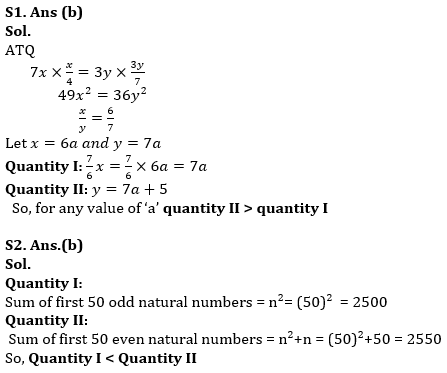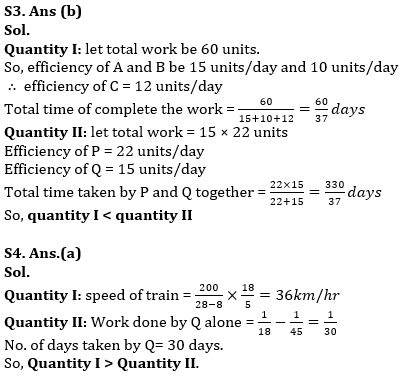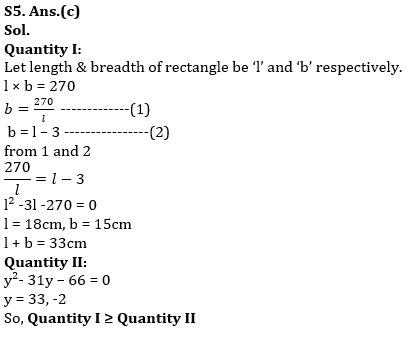Directions (1-5): In the given questions, two quantities are given, one as Quantity I and another as Quantity II. You have to determine relationship between two quantities and choose the appropriate option.
(a) Quantity I > Quantity II
(b) Quantity I < Quantity II
(c) Quantity I ≥ Quantity II
(d) Quantity I ≤ Quantity II
(e) Quantity I = Quantity II or no relation
Q1. 7x men can complete a piece of work in x/4 days while 3y men can complete the same work in 3y/7 days.
Quantity I: Value of 7/6 x
Quantity II: Value of y + 5
Q2. Quantity I : Sum of first 50 odd natural numbers.
Quantity II : sum of first 50 even natural numbers.
Q3. Quantity I: A can do a piece of work in 4 days and B can do the same piece of work in 6 days. C is 20 % more efficient than B, no. of days to complete the work when all work together.
Quantity II: P can do a piece of work in 15 days while Q can do the same piece of work in 22 days, working together no. of days required by P and Q to complete the work.
Q4. Quantity I (in km/hr.): A train crosses a pole in 8 seconds and a 200m long platform in 28 seconds. What is speed of the train? (km/hr)
Quantity II (in days): P can complete a work in 45 days and P and Q together can complete the same work in 18 days. In how many days Q alone will do the same work?
Q5. Quantity I (in cm): area of rectangle is 270cm² and difference between length and breadth is 3cm. Find the sum of length and breadth?
Quantity II (y): y²-31y – 66 = 0
Solutions



. . .





 Quantitative Aptitude Quiz For Bank Main...
Quantitative Aptitude Quiz For Bank Main...
 Quantitative Aptitude Quiz For Bank Foun...
Quantitative Aptitude Quiz For Bank Foun...





